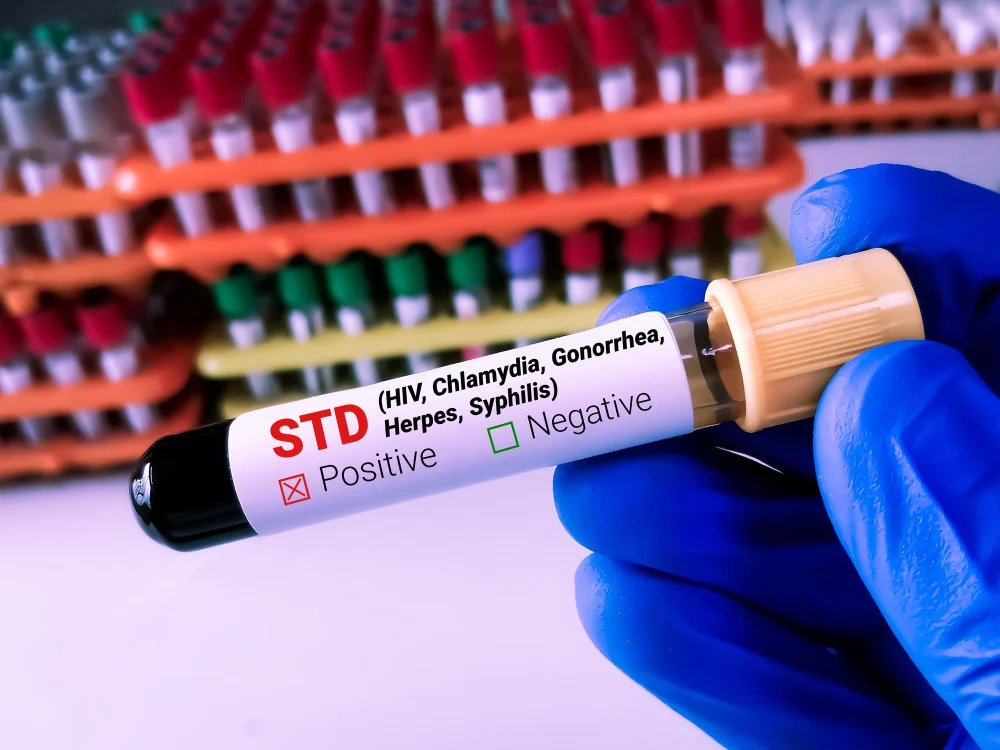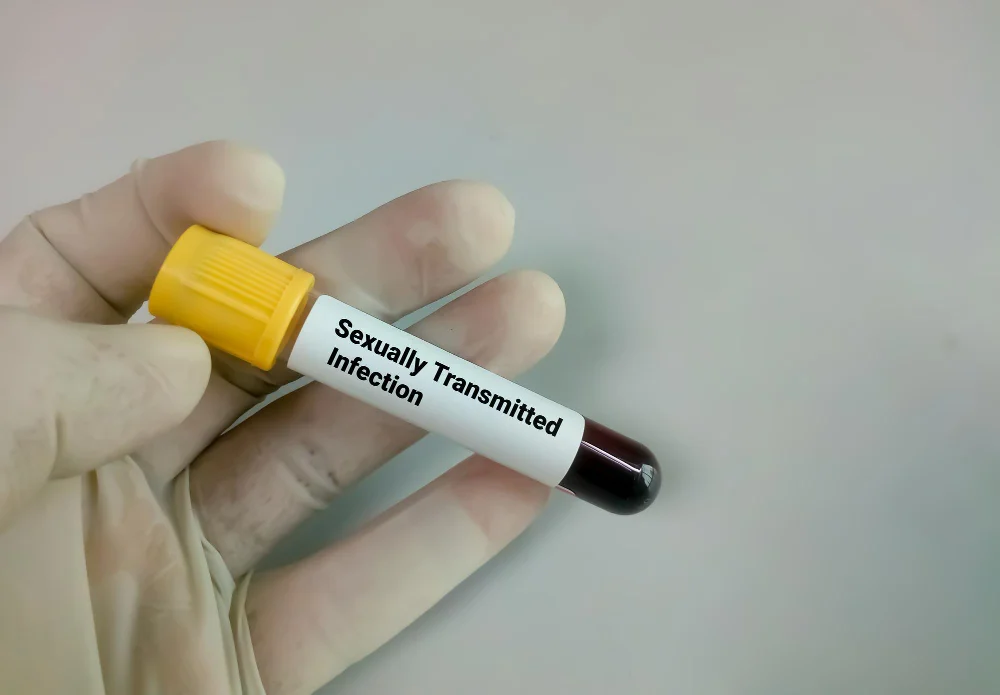Sexually transmitted infections (STIs) are a significant public health concern affecting millions of people worldwide. Understanding these infections, their symptoms, how they spread, and the available treatment options is crucial for prevention and maintaining sexual health.
What Are Sexually Transmitted Infections?
Sexually transmitted infections (STIs), also known as sexually transmitted diseases (STDs), are infections primarily spread through sexual contact. They can be caused by bacteria, viruses, parasites, or fungi.
How Sexually transmitted infections Spread?
STIs spread through various forms of sexual contact, including vaginal, anal, and oral sex. Some STIs can also be transmitted through non-sexual means, such as:
- Blood transfusions: Sharing needles or receiving infected blood.
- Mother-to-child transmission: During childbirth or breastfeeding.
- Skin-to-skin contact: Some STIs, like HPV and herpes, can spread through direct skin contact.
Risk Factor of Sexually Transmitted Infections :
Risk factors for sexually transmitted infections (STIs) include:
- Unprotected Sex: Engaging in sexual activity without using condoms or other barrier methods increases the risk of STI transmission.
- Multiple Sexual Partners: Having multiple sexual partners or having sexual contact with individuals who have multiple partners increases exposure to STIs.
- History of STIs: Previous infection with an STI raises the likelihood of acquiring another STI.
- Sexual Activity at a Young Age: Initiating sexual activity at a younger age can increase the risk of STIs due to less awareness, risk-taking behavior, and immature immune systems.
- Substance Abuse: Use of drugs or alcohol can impair judgment, leading to risky sexual behaviors and increased likelihood of unprotected sex.
- Lack of STI Screening: Not undergoing regular STI testing or screenings can delay diagnosis and treatment, allowing infections to spread.
- HIV Infection: Having HIV increases susceptibility to other STIs and vice versa due to compromised immune function.
- Sex Work: Individuals involved in sex work may have higher exposure to STIs due to frequent sexual contact and inconsistent condom use.
- Geographic Location: Some regions have higher prevalence rates of certain STIs due to social, economic, and healthcare factors.
- Lack of Education and Awareness: Limited knowledge about STIs, their transmission, and prevention methods can contribute to higher risk behaviors.

Awareness of these risk factors can help individuals take proactive steps to reduce their risk of acquiring and spreading sexually transmitted infections. Regular STI testing, practicing safe sex, and open communication with sexual partners are essential for maintaining sexual health.
Common Sexually Transmitted Infections (STIs)
Sexually transmitted infections (STIs) are prevalent worldwide, affecting millions of people each year. Here’s an overview of some of the most common STIs, their symptoms, and treatment options:
1. Chlamydia
Cause: Bacterium Chlamydia trachomatis
2. Gonorrhea
Cause: Bacterium Neisseria gonorrhoeae
3. Syphilis
Cause: Bacterium Treponema pallidum
4. Human Papillomavirus (HPV)
Cause: Human papillomavirus
5. Herpes Simplex Virus (HSV)
Cause: Herpes simplex virus type 1 (HSV-1) and type 2 (HSV-2)
6. Human Immunodeficiency Virus (HIV)
Cause: Human immunodeficiency virus
7. Trichomoniasis
Cause: Parasite Trichomonas vaginalis
8. Hepatitis B
Cause: Hepatitis B virus (HBV)
9. Hepatitis C
Cause: Hepatitis C virus (HCV)
10. Mycoplasma genitalium
Cause: Bacterium Mycoplasma genitalium
Symptoms of Common Sexually Transmitted Infections (STIs)
Sexually transmitted infections (STIs) can present a variety of symptoms, though some people may be asymptomatic. Here are the typical symptoms associated with several common STIs:
1. Chlamydia
- Often asymptomatic, especially in women
- Abnormal genital discharge (white, yellow, or green)
- Pain or burning sensation during urination
- Pain during intercourse (dyspareunia) in women
- Testicular pain in men
2. Gonorrhea
- Similar to chlamydia; often asymptomatic in women
- Thick, green or yellow discharge from the genitals
- Pain or burning sensation during urination
- Vaginal bleeding between periods in women
- Testicular pain or swelling in men
3. Syphilis
- Primary stage: Painless sores (chancres) at the site of infection
- Secondary stage: Skin rashes, especially on the palms and soles, mucous membrane lesions, flu-like symptoms
- Latent stage: No symptoms
- Tertiary stage: Severe medical problems affecting the heart, brain, and other organs
4. Human Papillomavirus (HPV)
- Often asymptomatic
- Genital warts (small bumps on the genital or anal area)
- Certain strains can lead to cancers (cervical, anal, penile, throat)
5. Herpes Simplex Virus (HSV)
- Painful blisters or sores on the genital or oral areas
- Itching or tingling in the affected area before sores appear
- Flu-like symptoms during initial outbreak (fever, body aches, swollen lymph nodes)
6. Human Immunodeficiency Virus (HIV)
- Acute phase: Flu-like symptoms (fever, sore throat, rash, swollen lymph nodes)
- Chronic phase: May be asymptomatic for years
- Advanced phase (AIDS): Rapid weight loss, recurring fever, night sweats, extreme fatigue, prolonged swelling of lymph nodes, chronic diarrhea, sores of the mouth, anus, or genitals, pneumonia
7. Trichomoniasis
- Often asymptomatic, especially in men
- Itching, burning, redness, or soreness of the genitals
- Discomfort during urination
- Unusual discharge (clear, white, yellowish, or greenish with a foul odor)
8. Hepatitis B
- Often asymptomatic
- Jaundice (yellowing of the skin and eyes)
- Fatigue
- Abdominal pain
- Dark urine
- Nausea and vomiting
9. Hepatitis C
- Often asymptomatic
- Jaundice
- Fatigue
- Abdominal pain
- Loss of appetite
- Nausea
10. Mycoplasma genitalium
- Often asymptomatic
- Urethritis in men (discharge, burning during urination)
- Cervicitis in women (abnormal discharge, pain during intercourse)
- Pelvic inflammatory disease (PID) in women (lower abdominal pain, fever, abnormal bleeding)
Diagnosis of Sexually Transmitted Infections (STIs)
Diagnosing sexually transmitted infections (STIs) involves a combination of medical history, physical examination, and specific laboratory tests. Here are the common methods used to diagnose various STIs:
1. Medical History and Physical Examination
- Medical History: A healthcare provider will ask about symptoms, sexual history, risk factors, and any previous STI diagnoses.
- Physical Examination: A physical examination may include inspecting the genital area, mouth, and anus for signs of infection, such as sores, rashes, discharge, or swelling.
2. Laboratory Tests
- Blood Tests: Used to detect infections such as HIV, syphilis, and hepatitis B and C.

- Urine Tests: Used to diagnose infections like chlamydia and gonorrhea.
- Swabs: Samples taken from the affected area (e.g., cervix, urethra, rectum, throat) to test for the presence of bacteria, viruses, or parasites. Commonly used for chlamydia, gonorrhea, trichomoniasis, and HPV.
- Pap Smear: A test for women that screens for cervical cancer and can detect HPV.
- Direct Fluorescent Antibody (DFA) Testing: Used for herpes simplex virus (HSV) detection.
- Nucleic Acid Amplification Tests (NAATs): Highly sensitive tests for detecting the genetic material of bacteria or viruses, commonly used for chlamydia and gonorrhea.

3. Specialized Tests
- Western Blot and ELISA: Used for confirming HIV and other viral infections.
- Rapid Plasma Reagin (RPR) or Venereal Disease Research Laboratory (VDRL) Test: Blood tests for syphilis.
- Wet Mount: A microscopic examination of a sample from the vagina to detect trichomoniasis.
4. Point-of-Care Testing
- Rapid tests that provide immediate results, such as rapid HIV tests and syphilis tests.
Steps for STI Testing
- Consultation: Discuss symptoms and concerns with a healthcare provider.
- Sample Collection: Depending on the STI suspected, provide a urine sample, blood sample, or allow a swab from the genital, anal, or oral area.
- Laboratory Analysis: Samples are sent to a lab for testing.
- Results: Results are typically available within a few days to a week. Rapid tests can provide results in minutes.
- Follow-Up: Based on results, discuss treatment options and preventive measures with your healthcare provider.
Importance of Regular Screening
- Early Detection: Regular screening helps detect STIs early, even when symptoms are not present.
- Prevent Complications: Early treatment can prevent complications such as infertility, chronic pain, and organ damage.
- Reduce Transmission: Knowing your STI status helps prevent the spread of infections to others.
When to Seek Medical Advice
If you experience any of these symptoms or suspect you might have been exposed to an STI, it is essential to seek medical advice promptly. Early diagnosis and treatment are crucial for preventing complications and reducing the risk of transmission to others. Regular STI screenings are recommended for sexually active individuals, especially those with multiple partners or those who engage in unprotected sex.
Prevention of Sexually Transmitted Infections (STIs)
Preventing sexually transmitted infections (STIs) involves adopting safe sexual practices and making informed decisions. Here are key strategies for reducing the risk of acquiring and transmitting STIs:
1. Consistent and Correct Condom Use
- Use latex or polyurethane condoms every time you have vaginal, anal, or oral sex.
- Condoms provide a barrier that reduces the risk of exposure to infectious agents.
- For oral sex, use condoms or dental dams to minimize risk.
2. Regular STI Testing
- Get tested regularly, especially if you have multiple sexual partners or engage in unprotected sex.
- Early detection allows for prompt treatment and reduces the risk of complications and transmission.
3. Vaccination
- HPV Vaccine: Protects against the types of human papillomavirus that cause most cervical cancers and genital warts.
- Hepatitis B Vaccine: Protects against hepatitis B, a virus that can cause chronic liver infection and increase the risk of liver cancer.
4. Mutual Monogamy
- Engage in a mutually monogamous relationship with a partner who has tested negative for STIs.
- Reducing the number of sexual partners decreases the risk of Sexually transmitted infections exposure.
5. Open Communication
- Discuss STI testing, sexual history, and prevention strategies with your sexual partners.
- Being open and honest helps ensure that both partners are informed and can take appropriate precautions.
6. Avoiding High-Risk Behaviors
- Avoid sharing needles or other drug paraphernalia, which can transmit infections like HIV and hepatitis.
- Limit the use of substances that impair judgment and decision-making, such as alcohol and drugs, which can lead to risky sexual behaviors.
7. Using Dental Dams for Oral Sex
- Dental dams provide a barrier during oral sex, reducing the risk of transmitting infections through oral-genital contact.
8. Avoiding Douching
- Douching can disrupt the natural balance of bacteria in the vagina, increasing the risk of infections.
9. Prompt Treatment of Sexually transmitted infections
- If you or your partner are diagnosed with an STI, follow the prescribed treatment regimen fully and avoid sexual activity until the infection is cleared.
- Inform recent sexual partners so they can get tested and treated if necessary.
10. Pre-Exposure Prophylaxis (PrEP)
- For individuals at high risk of HIV, taking PrEP can significantly reduce the likelihood of contracting the virus.
11. Post-Exposure Prophylaxis (PEP)
- If you believe you have been exposed to HIV, starting PEP within 72 hours can reduce the risk of infection. PEP involves taking antiretroviral medications for a month.
12. Good Hygiene Practices
- Urinate after sex to help flush out potential bacteria from the urethra.
- Maintain good genital hygiene to reduce the risk of infections.
Treatment of Common Sexually Transmitted Infections (STIs)
Effective treatment of sexually transmitted infections (STIs) varies depending on the type of infection. Early diagnosis and treatment are crucial to prevent complications and transmission. Here is an overview of the treatment options for several common STIs:
1. Chlamydia
- Cause: Bacterium Chlamydia trachomatis
- Treatment: Antibiotics, typically azithromycin (single dose) or doxycycline (twice daily for seven days). Sexual partners should also be treated simultaneously to prevent reinfection.
2. Gonorrhea
- Cause: Bacterium Neisseria gonorrhoeae
- Treatment: Dual antibiotic therapy with a single intramuscular dose of ceftriaxone and oral azithromycin. Due to increasing antibiotic resistance, treatment guidelines may change, so it’s essential to follow current medical advice.
3. Syphilis
- Cause: Bacterium Treponema pallidum
- Treatment: Penicillin G, administered via injection. The dosage and duration depend on the stage of the infection. For those allergic to penicillin, alternative antibiotics such as doxycycline or azithromycin may be used.
4. Human Papillomavirus (HPV)
- Cause: Human papillomavirus
- Treatment: There is no cure for the virus itself, but symptoms like genital warts can be treated with topical medications (e.g., imiquimod, podophyllin) or removed via cryotherapy, laser therapy, or surgical excision. Regular monitoring and Pap smears are essential for detecting and managing HPV-related cancers.
5. Herpes Simplex Virus (HSV)
- Cause: Herpes simplex virus type 1 (HSV-1) and type 2 (HSV-2)
- Treatment: Antiviral medications (e.g., acyclovir, valacyclovir, famciclovir) help manage symptoms and reduce the frequency of outbreaks. While there is no cure, these medications can help control the infection.
6. Human Immunodeficiency Virus (HIV)
- Cause: Human immunodeficiency virus
- Treatment: Antiretroviral therapy (ART) involves a combination of medications that reduce viral load and improve immune function. ART must be taken daily for life and requires regular medical follow-up. Early initiation of ART is crucial for improving outcomes and reducing transmission.
7. Trichomoniasis
- Cause: Parasite Trichomonas vaginalis
- Treatment: Antibiotics, typically metronidazole or tinidazole, taken as a single dose or over several days. Sexual partners should also be treated to prevent reinfection.
8. Hepatitis B
- Cause: Hepatitis B virus (HBV)
- Treatment: Acute hepatitis B often resolves on its own, but chronic hepatitis B may require antiviral medications (e.g., tenofovir, entecavir) to reduce liver damage and prevent complications. Regular monitoring and liver function tests are essential.
9. Hepatitis C
- Cause: Hepatitis C virus (HCV)
- Treatment: Direct-acting antiviral (DAA) medications can cure most cases of hepatitis C, usually within 8 to 12 weeks. Common DAAs include sofosbuvir, ledipasvir, and daclatasvir.
10. Mycoplasma genitalium
- Cause: Bacterium Mycoplasma genitalium
- Treatment: Antibiotics, typically azithromycin or moxifloxacin, are used to treat this infection. Due to rising antibiotic resistance, treatment regimens may vary, and follow-up testing is often necessary.
General Guidelines for STI Treatment
- Prompt Treatment: Early intervention prevents complications and reduces the risk of transmission.
- Partner Notification and Treatment: Sexual partners should be informed, tested, and treated as necessary to prevent reinfection.
- Follow-Up Testing: After treatment, follow-up testing ensures the infection has been cleared and helps monitor for potential reinfection.
- Safe Sex Practices: Using condoms and practicing safe sex can prevent the spread of STIs.
- Regular Screening: Routine STI screenings are essential, especially for sexually active individuals with multiple partners.
Living with an Sexually transmitted infections
Living with an STI can be challenging, but many resources and support systems are available. Key steps to manage living with an STI include:
- Follow treatment plans: Adhere to prescribed medications and follow-up appointments.
- Educate yourself: Understand your condition and how to manage symptoms.
- Practice safe sex: Continue using protection to prevent spreading the infection.
- Seek support: Join support groups or seek counseling to cope with emotional and psychological impacts.
Conclusion
Sexually transmitted infections are a critical public health issue that requires awareness, education, and proactive measures for prevention and treatment. Regular screenings, safe sex practices, open communication with partners, and prompt medical attention can significantly reduce the impact of STIs on individuals and communities. By staying informed and taking preventive steps, we can protect ourselves and others from the consequences of sexually transmitted infections.
Disclaimer: This information provides a general overview of diagnosis, treatment, and medication related to alopecia areata. It is intended to assist in understanding potential options but is not comprehensive. This content is not a substitute for professional medical advice, diagnosis, or treatment. It does not cover all possible conditions, treatments, side effects, or risks specific to individual cases. For personalized medical advice, please consult a healthcare provider who can evaluate your unique circumstances. This information does not endorse or validate any specific treatments or medications.
FAQs;
Is hepatitis a sexually transmitted infection?
Yes, hepatitis B and hepatitis C can be sexually transmitted infections.
Is scabies a sexually transmitted infection?
No, scabies is not typically considered a sexually transmitted infection (STI). Scabies is caused by the infestation of the skin by the microscopic mite Sarcoptes scabiei. It spreads through prolonged skin-to-skin contact with an infested person, such as during close personal contact or through sharing of infested clothing or bedding. While sexual contact can transmit scabies, it is not primarily a sexually transmitted infection.
Is thrush a sexually transmitted infection?
Thrush, also known as candidiasis or yeast infection, is not considered a sexually transmitted infection (STI). It is caused by an overgrowth of the fungus Candida in the body, most commonly Candida albicans. Thrush can occur in various parts of the body, including the mouth (oral thrush), genitals (genital thrush), and skin folds. While thrush can sometimes be transmitted through sexual contact, it is not typically classified as an STI because it can occur without sexual activity. Factors such as weakened immune system, antibiotic use, diabetes, and pregnancy can contribute to the development of thrush.
Can post exposure doxycycline to prevent bacterial sexually transmitted infections?
Post exposure prophylaxis (PEP) with doxycycline is sometimes used to prevent certain bacterial sexually transmitted infections (STIs), particularly after exposure to conditions where there is a high risk of infection. For example, in cases of suspected sexual assault or unprotected intercourse with a partner known to have an STI, a single dose or short course of doxycycline may be prescribed as a preventive measure against infections like chlamydia and gonorrhea. However, PEP with antibiotics should be administered under the guidance of a healthcare professional, as it is not suitable for all situations and may not be effective against all types of STIs.



